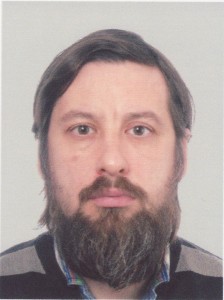 Skoltech Center for Photonics and Quantum Materials is pleased to invite you to a seminar titled “Local and non-local magnetic correlations in iron, nickel, and iron pnictides”.
Skoltech Center for Photonics and Quantum Materials is pleased to invite you to a seminar titled “Local and non-local magnetic correlations in iron, nickel, and iron pnictides”.
Speaker: Prof. Andrey Katanin, Mikheev Institute of Metal Physics, Ekaterinburg.
Abstract
Investigations of ferromagnetism of iron and nickel attracts a lot of attention because of both, theoretical and practical interest to these substances. To explain physical properties of iron and nickel, it is important to answer the question whether local moments exist in these materials. We consider this problem within the ab initio LDA+DMFT approach with continuous-time quantum Monte Carlo solver (with Ising or SU(2) symmetry of the Hund exchange), considering in particular orbitally-resolved contributions to one- and two-particle properties. For alpha-iron we find the well-defined local moments, which appear due to Hund exchange. We also show that at low temperatures in the paramagnetic phase the subsystem of t2g states is close to the spin freezing transition, which accompany earlier found non-quasiparticle form of eg states. Furthermore, we discuss application of the spin-fermion model to treat the non-local degrees of freedom, which allow us to calculate the magnetic exchange interaction, reproduce correctly Curie temperature and the energy of the alpha phase. In gamma- (fcc) iron we find that the magnetic properties at not too low temperatures T>1000K can be described in terms of temperature-dependent effective local moments, yielding relatively narrow peaks in the real part of the local dynamic magnetic susceptibility, which static part fulfills the Curie-Weiss law. At the same time, at low temperatures gamma-iron (which is realized in precipitates) is better described in terms of itinerant picture. In nickel we show that the local moments appear due to the giant van Hove singularity of the density of states. We also compare these results with the calculations of local magnetic properties of iron pnictide compound LaFeAsO.
